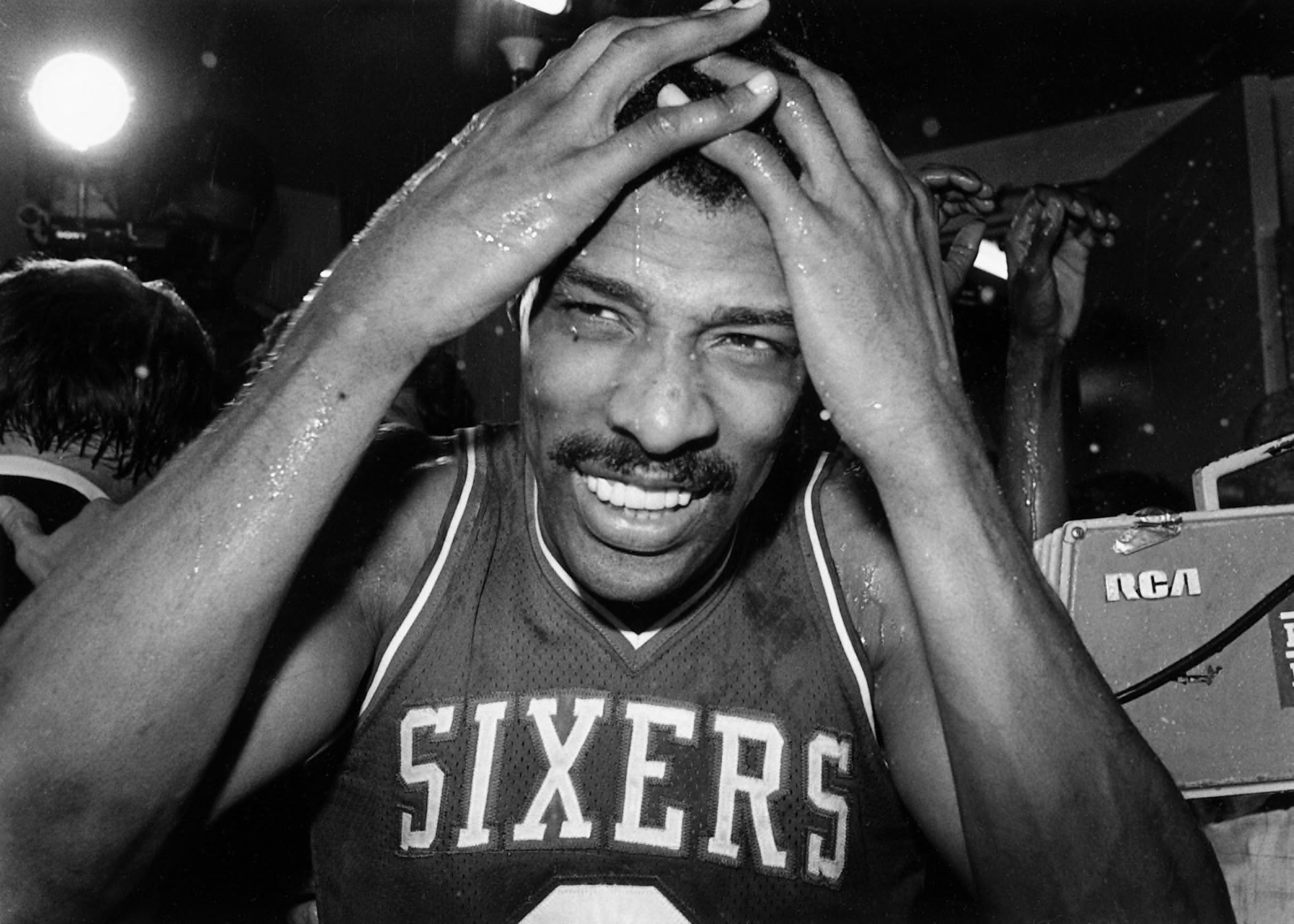

#JULIUS ERVING NBA PRO#
Playing forward, he transitioned quickly to the pro game.
#JULIUS ERVING NBA FREE#
In 1971 Erving left college and joined the Virginia Squires, of the American Basketball Association (ABA), as an undrafted free agent.

At Massachusetts, he averaged 32.5 points and 20.2 rebounds a game, one of only five players at the time to ever average more than 20 points and 20 rebounds a game. He played just two seasons for the school-freshmen were ineligible to play varsity, and Erving left before his senior season-but he left his mark on the program. In 1968, Erving, who was not recruited by many big basketball programs, enrolled at the University of Massachusetts.

#JULIUS ERVING NBA PROFESSIONAL#
While the exact details of how he got the name are unclear, it's believed that a friend began calling him it because Erving had dubbed him "Professor." Erving liked the name and it stayed with him throughout his college and professional careers. He was a solid player at Roosevelt High School, where the nickname "Dr.

J" by his fans - became known for his style and grace on and off the court during his 16-year professional basketball career. Early Yearsīorn on February 22, 1950, in Roosevelt, New York, Julius Erving - called "Dr. Upon retiring in 1987, he had played in more than 800 games, scoring an average of 22 points per game. In 1983 he helped lead the club to a world championship. Julius Erving helped the New York Nets win the ABA championship in 19, before switching to the NBA and joining the Philadelphia 76ers. Before Julius Erving, dunking was a practice most commonly used by the big men (usually standing close to the hoop) to show their brutal strength which was seen as style over substance, even unsportsmanlike, by many purists of the game.Īddcomment(replytokey, level, postcommenttext, newreplyid) His signature dunk was the "slam" dunk, since incorporated into the vernacular and basic skill set of the game in the same manner as the "crossover" dribble and the "no look" pass. J" brought the practice into the mainstream. While Connie Hawkins, "Jumping" Johnny Green, Elgin Baylor, Jim Pollard and Gus Johnson performed spectacular dunks before Erving's time, "Dr. Many consider him one of the most talented players in the history of the NBA he is widely acknowledged as one of the game's best dunkers. In 2004, he was inducted into the Nassau County Sports Hall of Fame. In 1994, Erving was named by Sports Illustrated as one of the 40 most important athletes of all time. He was well known for slam dunking from the free throw line in slam dunk contests and was the only player voted Most Valuable Player in both the ABA and the NBA.Įrving was inducted in 1993 into the Basketball Hall of Fame and was also named to the NBA's 50th Anniversary All-Time team. He is the sixth-highest scorer in ABA/NBA history with 30,026 points (NBA and ABA combined). Erving helped legitimize the American Basketball Association (ABA) and was the best-known player in that league when it merged with the National Basketball Association (NBA) after the 1975–76 season.Įrving won three championships, four Most Valuable Player Awards, and three scoring titles with the ABA's Virginia Squires and New York Nets (now the NBA's Brooklyn Nets) and the NBA's Philadelphia 76ers. J, is an American retired basketball player who helped popularize a modern style of play that emphasizes leaping and playing above the rim. Julius Winfield Erving II (born February 22, 1950), commonly known by the nickname Dr.


 0 kommentar(er)
0 kommentar(er)
